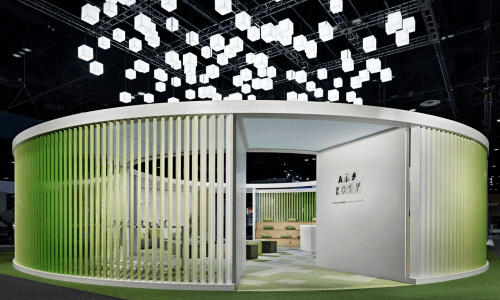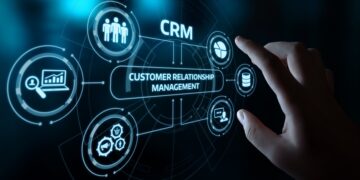In an era increasingly defined by environmental consciousness and the urgent need to combat climate change, the technology sector, despite its often-perceived “clean” image, faces its own critical role in fostering sustainability. From the energy-intensive data centers powering our digital lives to the vast electronic waste generated by our consumption habits, the tech industry has a significant ecological footprint. This pressing reality has propelled sustainable tech solutions to the forefront of innovation. It’s no longer just about making devices faster or more powerful; it’s about engineering and implementing technologies that actively minimize environmental impact, conserve resources, and promote eco-friendly operations across the entire digital ecosystem. This isn’t merely a trend; it’s a fundamental shift towards building a greener, more responsible technological future.
The Imperative for Green Tech: Understanding the Ecological Footprint
To truly appreciate the urgency and strategic importance of sustainable tech solutions, we must first understand the environmental challenges posed by the technology sector itself. The digital world, while seemingly intangible, relies on a vast physical infrastructure with significant ecological consequences.
A. The Energy Consumption Conundrum
The digital age runs on electricity, and a vast amount of it is consumed by technology infrastructure.
- Data Centers: The Digital Giants: Data centers, the unseen powerhouses of the internet, are enormous energy hogs. They consume massive amounts of electricity not just for computation and data storage, but also for cooling their servers to prevent overheating. Their global energy footprint is comparable to that of entire countries, and it’s rapidly growing. The carbon emissions associated with this energy consumption are substantial, often coming from fossil fuel-based power grids.
- Network Infrastructure: The vast global network of undersea cables, cell towers, routers, and switches that connect us all also requires continuous power. While individual components might be efficient, their cumulative energy demand is immense, contributing to overall energy consumption.
- Device Power: From smartphones and laptops to smart home devices and wearables, billions of personal and enterprise devices consume energy daily. While individual device consumption is low, the sheer volume adds up, especially when considering manufacturing and standby power.
- Cryptocurrency Mining: Energy-intensive processes like Bitcoin mining consume extraordinary amounts of electricity, often from carbon-heavy sources, raising significant environmental concerns due to their massive energy footprint and associated emissions.
B. The Challenge of Electronic Waste (E-Waste)
The rapid pace of technological innovation and consumer demand for new gadgets has created a monumental problem: electronic waste.
- Short Product Lifecycles: Many electronic devices are designed with relatively short lifecycles, encouraging frequent upgrades. This leads to a constant churn of old devices being discarded.
- Toxic Components: E-waste contains hazardous materials like lead, mercury, cadmium, and brominated flame retardants. When improperly disposed of, these toxins can leach into soil and water, contaminating ecosystems and posing severe health risks to humans and wildlife.
- Resource Depletion: Manufacturing electronics requires significant amounts of rare earth metals and other valuable raw materials. The linear ‘take-make-dispose’ model depletes these finite resources and contributes to environmental degradation through mining.
- Low Recycling Rates: Despite efforts, global e-waste recycling rates remain alarmingly low. Much of the e-waste ends up in landfills or is informally recycled in developing countries, often under unsafe conditions, leading to widespread pollution.
C. Water Usage and Carbon Footprint Beyond Energy
Beyond energy and e-waste, technology’s environmental impact extends to other critical resources.
- Water for Cooling: Data centers require substantial amounts of water for cooling systems, especially those using evaporative cooling. In water-stressed regions, this can place a significant burden on local water resources.
- Manufacturing Processes: The fabrication of chips, circuit boards, and other electronic components is highly water-intensive and often involves toxic chemicals, posing risks of water pollution.
- Supply Chain Emissions: The global supply chain for electronics—from raw material extraction and processing to manufacturing, transportation, and distribution—generates considerable carbon emissions, adding to the overall footprint of devices before they even reach consumers.
- Planned Obsolescence: While debated, the concept of planned obsolescence, where products are designed to become obsolete within a short period, exacerbates resource consumption and e-waste generation.
These multifaceted challenges underscore the urgent need for the technology sector to proactively integrate sustainable practices and innovative eco-friendly solutions into its core operations and product design.
Core Principles of Sustainable Tech Solutions
Sustainable tech isn’t a single technology but a philosophy that integrates environmental responsibility across the entire technology lifecycle. Several core principles guide this approach.
A. Energy Efficiency and Renewable Energy Adoption
At the forefront of sustainable tech is minimizing energy consumption and shifting towards clean energy sources.
- Optimized Hardware Design: Designing chips, servers, and devices to perform more computation with less power. This includes using low-power components, efficient power management features, and optimizing internal architectures.
- Software Optimization: Writing efficient code that requires less processing power and memory, thereby reducing the underlying hardware’s energy consumption. This includes optimized algorithms and efficient data structures.
- Data Center Efficiency: Implementing advanced cooling technologies (e.g., liquid cooling, free cooling), optimizing airflow, and employing smart power management within data centers to reduce Power Usage Effectiveness (PUE) closer to the ideal of 1.0.
- Transition to Renewables: Powering data centers and operations with 100% renewable energy sources (solar, wind, hydro). This involves direct purchase of renewable energy, power purchase agreements (PPAs), or purchasing Renewable Energy Certificates (RECs).
- Smart Grids and Energy Management: Using AI and smart tech to optimize energy distribution and consumption within buildings and cities, integrating renewable sources more effectively into the grid.
B. Circular Economy Principles and E-Waste Reduction
Moving away from the linear ‘take-make-dispose’ model towards a circular economy for electronics is crucial for sustainable tech.
- Design for Longevity and Repairability: Engineering products that are durable, modular, and easy to repair, upgrade, and disassemble. This extends product lifecycles and reduces the frequency of replacement.
- Responsible Sourcing: Ensuring that raw materials are sourced ethically and sustainably, minimizing environmental damage and human rights abuses associated with mining.
- Recycling and Reuse: Developing robust systems for collecting, refurbishing, reusing, and recycling electronic components. This involves recovering valuable materials (e.g., gold, silver, copper) and safely disposing of hazardous substances.
- Closed-Loop Manufacturing: Aiming to reuse materials from old products to manufacture new ones, creating a circular flow of resources and significantly reducing waste.
- Product-as-a-Service Models: Shifting from product ownership to service models where companies retain ownership of hardware and are responsible for its end-of-life management, incentivizing durability and reuse.
C. Resource Conservation and Water Efficiency
Beyond energy, sustainable tech focuses on minimizing the consumption of other critical resources, especially water.
- Water-Efficient Cooling: Implementing advanced cooling technologies in data centers that reduce or eliminate water usage (e.g., air-cooled systems, immersion cooling).
- Optimized Manufacturing Processes: Developing cleaner manufacturing processes that use less water and fewer toxic chemicals, and implementing closed-loop water systems where water is recycled.
- Sustainable Material Selection: Choosing materials that are less resource-intensive to produce, biodegradable, or sourced from recycled content. This includes exploring alternatives to rare earth metals.
D. Transparency and Reporting
Accountability is key to driving sustainable practices.
- Environmental Reporting: Companies publicly reporting on their energy consumption, carbon emissions, water usage, and e-waste generation. This provides transparency and allows stakeholders to track progress.
- Certifications and Standards: Adhering to environmental certifications (e.g., ISO 14001) and industry standards for sustainability in product design and operations.
- Life Cycle Assessment (LCA): Conducting comprehensive LCAs to understand the environmental impact of products throughout their entire lifecycle, from raw material extraction to end-of-life.
E. Innovation for Environmental Solutions
Sustainable tech also involves leveraging technology itself to solve environmental challenges.
- Environmental Monitoring: Using IoT sensors, AI, and big data analytics to monitor air and water quality, deforestation, biodiversity, and climate patterns, providing critical data for environmental protection.
- Precision Agriculture: Applying AI and IoT to optimize water use, fertilizer application, and crop yields, reducing environmental impact in farming.
- Smart Grids: Utilizing advanced technology to manage renewable energy integration, optimize energy distribution, and promote demand-side management.
- Circular Economy Platforms: Developing digital platforms that facilitate the reuse, repair, and recycling of materials and products, connecting consumers with recycling services and businesses with waste streams.
Key Technological Pillars Supporting Sustainable Operations
Implementing sustainable tech principles requires leveraging specific technological advancements that enable eco-friendly practices across various domains.
A. Cloud Computing for Green IT
Paradoxically, while data centers consume vast energy, strategic use of cloud computing can significantly contribute to sustainability.
- Shared Resources and Higher Utilization: Cloud providers achieve massive economies of scale and higher server utilization rates than most on-premise data centers. This means fewer physical servers are needed globally to deliver the same amount of computing power, reducing overall energy consumption.
- Renewable Energy Commitments: Major cloud providers (AWS, Azure, Google Cloud) have aggressive goals for powering their operations with 100% renewable energy, often far exceeding what individual companies can achieve on their own. Migrating to the cloud allows businesses to inherit these green initiatives.
- Elasticity and Right-Sizing: Cloud’s elasticity means resources can be provisioned precisely when needed and scaled down (or to zero with serverless) during periods of low demand. This prevents over-provisioning and wasted energy that is common in static on-premise environments.
- Optimized Data Center Design: Cloud providers invest in cutting-edge, energy-efficient data center designs, including advanced cooling techniques (e.g., direct-to-chip liquid cooling, efficient airflow management) and highly efficient power delivery systems.
B. Artificial Intelligence (AI) and Machine Learning (ML)
AI and ML are powerful tools for optimizing resource usage and enhancing environmental monitoring.
- Energy Optimization: AI algorithms can predict energy demand and optimize the operation of heating, ventilation, and air conditioning (HVAC) systems in buildings and data centers, leading to significant energy savings. Google, for instance, has used AI to reduce cooling energy in its data centers by up to 40%.
- Resource Allocation: ML can optimize resource allocation in cloud environments, ensuring workloads run on the most energy-efficient hardware available and dynamically adjusting capacity based on real-time demand.
- Predictive Maintenance: AI-powered predictive maintenance reduces energy waste from inefficient machinery and extends the lifespan of equipment, preventing premature replacement.
- Environmental Modeling: ML models can process vast environmental datasets (e.g., climate data, pollution levels) to create more accurate forecasts, identify patterns, and inform conservation strategies.
C. Internet of Things (IoT)
IoT devices, when deployed strategically, can provide the data backbone for smart, sustainable systems.
- Smart Buildings: IoT sensors monitor occupancy, lighting, temperature, and air quality, allowing building management systems to optimize energy use, ventilation, and lighting based on real-time conditions.
- Precision Agriculture: IoT sensors in fields monitor soil moisture, nutrient levels, and crop health, enabling farmers to optimize water and fertilizer use, reducing waste and environmental runoff.
- Smart Grids: IoT sensors on the electrical grid monitor energy flow, demand, and renewable energy input, allowing for more efficient distribution and better integration of intermittent renewable sources.
- Waste Management: IoT-enabled smart bins can signal when they are full, optimizing waste collection routes and reducing fuel consumption for waste management companies.
D. Edge Computing
By processing data closer to its source, edge computing can reduce the need to transmit vast amounts of data to centralized cloud data centers, thereby reducing network energy consumption.
- Reduced Data Transmission: Processing data at the edge means only aggregated or critical data needs to be sent to the cloud, lowering bandwidth usage and associated energy.
- Real-time Local Optimization: For applications like smart factories or intelligent transportation systems, edge computing enables real-time decisions and optimizations without cloud latency, leading to more efficient operations.
- Distributed Energy Management: Edge devices can locally manage distributed energy resources (e.g., solar panels, battery storage) to optimize local energy consumption and reduce reliance on the main grid.
E. Blockchain for Supply Chain Transparency
While blockchain itself can be energy-intensive (e.g., proof-of-work), its application in supply chain management can enhance sustainability by ensuring transparency and traceability.
- Ethical Sourcing: Blockchain can provide an immutable record of a product’s journey from raw materials to consumer, verifying ethical sourcing, fair labor practices, and sustainable production.
- Waste Reduction: By tracking materials and products throughout the supply chain, blockchain can help identify inefficiencies, reduce waste, and promote circular economy principles.
- Carbon Footprint Tracking: Blockchain can be used to securely record and verify carbon emissions across a supply chain, enabling more accurate reporting and helping companies identify areas for reduction.
Implementing Sustainable Tech Solutions: A Strategic Roadmap
Adopting sustainable tech is a continuous journey that requires a holistic strategy encompassing design, operations, and end-of-life management.
A. Conduct a Comprehensive Environmental Impact Assessment
Before implementing solutions, perform a detailed environmental impact assessment of your current technology operations. This involves:
- Energy Audits: Quantifying energy consumption across data centers, offices, and devices.
- Carbon Footprint Measurement: Calculating Scope 1, 2, and 3 emissions associated with your tech infrastructure and supply chain.
- E-Waste Audits: Tracking the volume and composition of electronic waste generated.
- Water Usage Analysis: Assessing water consumption in data centers and manufacturing. This baseline understanding is crucial for setting goals and measuring progress.
B. Prioritize Cloud Migration and Optimization
For many organizations, migrating workloads to major public cloud providers (AWS, Azure, Google Cloud) is a significant first step towards green IT.
- Leverage Cloud Provider’s Sustainability Initiatives: Inherit the carbon reduction and renewable energy commitments of leading cloud providers.
- Optimize Cloud Usage: Don’t just migrate; optimize. Implement proper resource right-sizing, use auto-scaling to avoid over-provisioning, leverage serverless architectures where appropriate, and de-provision unused resources diligently.
- Choose Green Regions: If available, select cloud regions powered by a higher percentage of renewable energy.
C. Embrace Circular Economy Principles in Hardware Management
Redefine your approach to hardware, from procurement to disposal.
- Extend Hardware Lifespan: Implement robust maintenance programs, encourage internal repairs, and offer upgrades to extend the life of devices.
- Responsible Procurement: Prioritize purchasing from manufacturers with strong sustainability commitments, using eco-friendly materials, and offering take-back programs. Look for certifications like EPEAT.
- Effective E-Waste Management: Partner with certified e-waste recyclers who adhere to strict environmental standards for safe and responsible disposal, material recovery, and data destruction. Avoid informal recycling channels.
- Explore Reuse and Refurbishment: Implement programs to refurbish and reuse internal hardware, or donate/sell it for secondary use, reducing the need for new manufacturing.
D. Optimize Software and Data Management for Efficiency
Software plays a crucial role in overall system efficiency.
- Green Software Development: Train developers to write energy-efficient code, optimize algorithms, and choose energy-conscious programming languages and frameworks.
- Data Optimization: Implement data retention policies to delete unnecessary data, optimize data storage (e.g., using cold storage for infrequently accessed data), and use data compression to reduce storage footprint.
- Efficient Algorithms: Employ algorithms that require fewer computational cycles to achieve results, particularly for large-scale data processing and AI.
E. Invest in Smart Infrastructure and IoT for Resource Control
Deploy smart technologies to gain granular control over resource consumption.
- Smart Building Management Systems: Implement IoT sensors and AI-driven systems to optimize lighting, HVAC, and power in offices and facilities based on real-time occupancy and environmental conditions.
- Smart Supply Chain: Use IoT and analytics to optimize logistics, reduce fuel consumption in transportation, and identify inefficiencies in the supply chain.
- Renewable Energy Integration: Explore opportunities for on-site renewable energy generation (solar panels) and integrate with smart grid solutions.
F. Foster a Culture of Sustainability and Transparency
Sustainability should be a core value, not just a departmental initiative.
- Employee Engagement: Educate employees on sustainable practices, encourage energy-saving habits, and promote responsible e-waste disposal.
- Set Ambitious Goals: Establish clear, measurable, and time-bound sustainability goals (e.g., carbon neutrality by X year, X% reduction in e-waste).
- Public Reporting: Regularly publish transparency reports on environmental performance, demonstrating commitment and progress to stakeholders and consumers.
- Collaborate with Partners: Work with vendors, suppliers, and industry peers to drive broader sustainable practices across the tech ecosystem.
The Future Trajectory of Sustainable Tech Solutions
The journey towards a fully sustainable technology sector is ongoing, with exciting innovations and strategic shifts poised to accelerate progress.
A. Net-Zero and Carbon-Negative Computing
The ultimate goal for data centers and cloud providers is to move beyond carbon neutrality to net-zero or even carbon-negative computing. This will involve:
- Advanced Renewable Integration: More direct power purchase agreements, investments in new renewable energy projects, and sophisticated energy storage solutions (e.g., large-scale batteries, green hydrogen).
- Carbon Capture and Utilization: Technologies that capture carbon emissions directly from data center operations and either store or convert them into useful products.
- Sustainable Cooling Innovations: Radical new cooling methods that use minimal energy and water, potentially leveraging waste heat for other purposes (e.g., heating buildings).
B. Hyper-Efficient Hardware and Materials Innovation
The push for greater energy efficiency and reduced material impact will continue through fundamental advancements in hardware.
- Beyond Silicon: Research into new computing paradigms like neuromorphic computing, optical computing, and quantum computing that promise vastly superior energy efficiency for specific workloads.
- Sustainable Materials: Development and widespread adoption of new, truly biodegradable, recyclable, or bio-sourced materials for device components, reducing reliance on rare earths and toxic substances.
- Self-Repairing Electronics: Research into materials and designs that allow devices to self-repair minor damage, significantly extending product lifespans and reducing waste.
C. AI for Systemic Environmental Optimization
AI’s role will expand beyond individual device or data center optimization to tackling systemic environmental challenges.
- Climate Modeling and Prediction: More powerful AI models for hyper-accurate climate forecasting, understanding complex environmental interactions, and predicting the impact of climate change.
- Biodiversity Monitoring and Conservation: AI-powered systems for monitoring endangered species, detecting illegal poaching, and managing conservation efforts.
- Circular Economy Orchestration: AI-driven platforms that optimize the entire lifecycle of products, from design for disassembly to automated sorting for recycling and matchmaking of waste streams with material demands.
D. Digital Product Passports and Enhanced Transparency
Consumers and regulators will increasingly demand greater transparency about the environmental footprint of electronic products.
- Digital Product Passports: Blockchain-enabled digital passports that track a product’s entire lifecycle, from material sourcing and manufacturing to usage data, repair history, and end-of-life options, providing unprecedented transparency.
- Standardized Carbon Footprint Labels: Similar to energy labels on appliances, standardized carbon footprint labels on electronic devices, empowering consumers to make informed, sustainable choices.
- Regulatory Enforcement: Stricter governmental regulations regarding e-waste management, material sourcing, and product repairability, pushing manufacturers towards more sustainable practices.
E. Eco-Conscious Software Development Frameworks
The emphasis on green software engineering will become mainstream, with new tools and frameworks emerging to support it.
- Energy-Aware Development Kits: Tools that allow developers to analyze and optimize the energy consumption of their code during development.
- Sustainable Design Patterns: Architectural patterns and coding practices specifically aimed at minimizing resource usage (e.g., efficient algorithms, lazy loading, optimized data transfers).
- Green Cloud Optimization Tools: AI-driven tools that automatically identify and recommend cloud architecture changes for maximum energy and cost efficiency.
Conclusion
The pervasive influence of technology in our modern world makes its environmental footprint an unavoidable and critical concern. The transition towards sustainable tech solutions is no longer a niche endeavor but a strategic imperative that will define the future of the industry. By systematically addressing energy consumption, tackling the mounting challenge of electronic waste, and optimizing resource utilization throughout the entire technology lifecycle, we can significantly mitigate tech’s ecological impact.
This transformation is driven by a commitment to core principles like energy efficiency, circular economy models, resource conservation, and radical transparency. It is enabled by powerful technological advancements in cloud computing, artificial intelligence, IoT, and edge computing. While the journey demands significant investment, cross-functional collaboration, and continuous innovation, the benefits—a reduced carbon footprint, enhanced resource security, improved brand reputation, and long-term economic resilience—are immense.
The future of technology is inextricably linked to the future of our planet. By designing, developing, and operating eco-friendly technologies, the tech industry can not only minimize its negative impact but also emerge as a powerful force for global sustainability, truly building a greener and more responsible digital world, one eco-friendly operation at a time.










